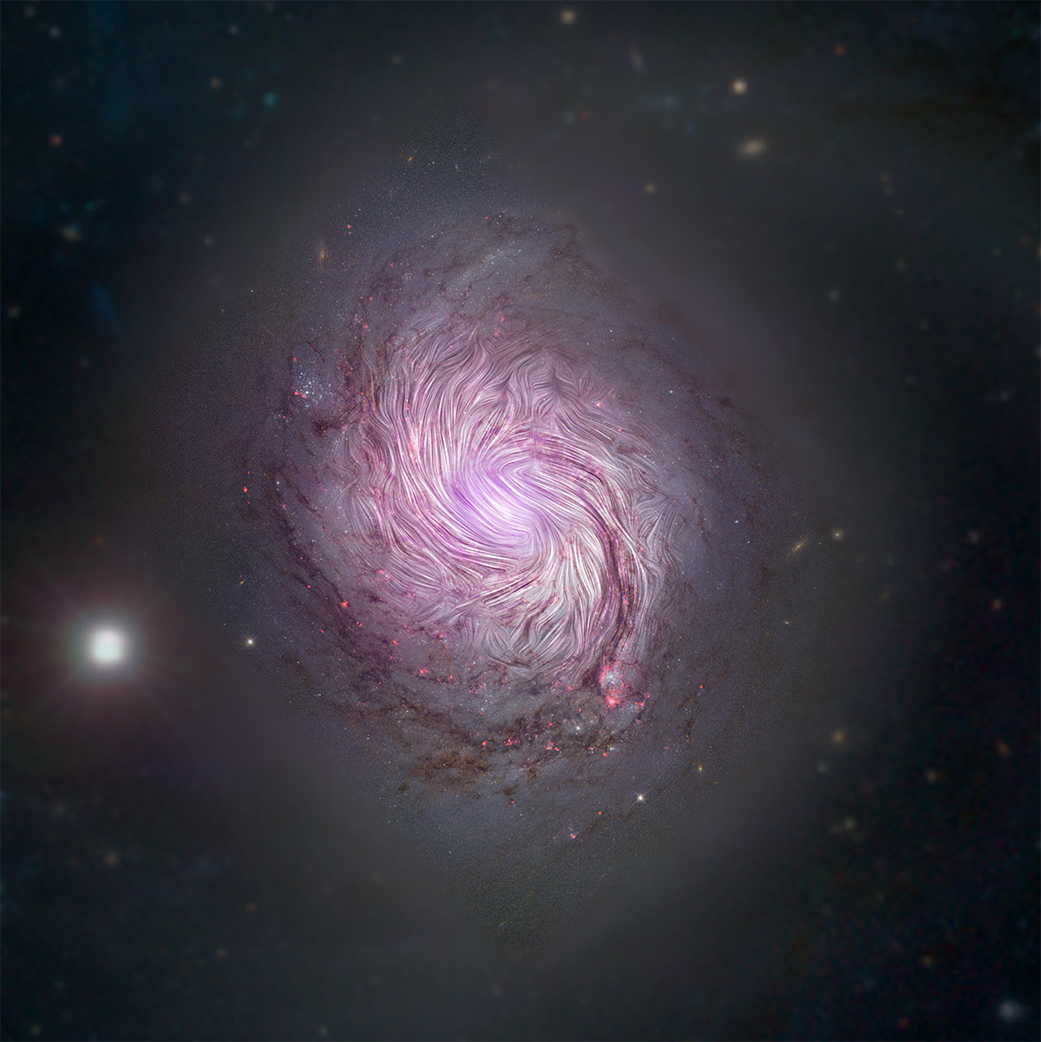塑造螺旋星系
Magnetic fields in NGC 1068, or M77, are shown as streamlines over a visible light and X-ray composite image of the galaxy from the Hubble Space Telescope, NuSTAR or the Nuclear Spectroscopic Array, and the Sloan Digital Sky Survey. The magnetic fields align along the entire length of the massive spiral arms — 24,000 light years across (0.8 kiloparsecs) — implying that the gravitational forces that created the galaxy’s shape are also compressing the its magnetic field. This supports the leading theory of how the spiral arms are forced into their iconic shape known as “density wave theory.” SOFIA, the Stratospheric Observatory for Infrared Astronomy, studied the galaxy using far-infrared light (89 microns) to reveal facets of its magnetic fields that previous observations using visible and radio telescopes could not detect.
Learn more: How to Shape a Spiral Galaxy
Image Credit: NASA/SOFIA; NASA/JPL-Caltech/Roma Tre Univ.
NGC 1068(或M77)的磁场在哈勃太空望远镜、核星或核光谱阵列和斯隆数字巡天仪拍摄的银河系可见光和X射线合成图像上显示为流线型。磁场沿着巨大的螺旋臂的整个长度对齐——跨越24000光年(0.8千秒差距)——这意味着创造星系形状的引力也在压缩其磁场。这支持了关于旋臂如何被迫形成其标志性形状的主流理论,即“密度波理论”。红外平流层平流层天文台SOFIA使用远红外光(89微米)研究了银河系,以揭示其磁场的各个方面,而以前使用可见光和射电望远镜无法观测到。
了解更多:如何塑造螺旋星系
图片来源:NASA/SOFIA; NASA/JPL-Caltech/Roma Tre Univ.

